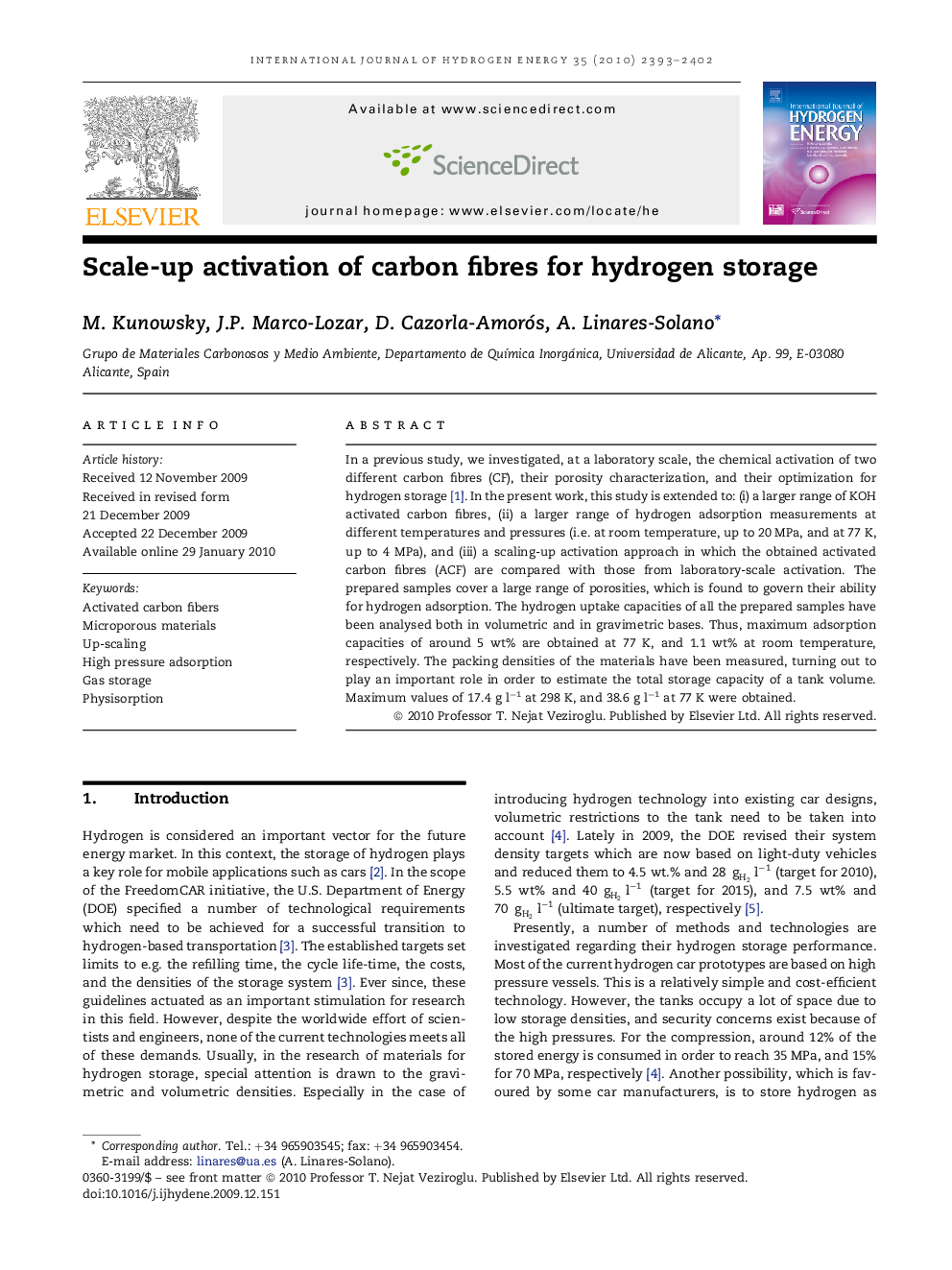| Article ID | Journal | Published Year | Pages | File Type |
|---|---|---|---|---|
| 1280762 | International Journal of Hydrogen Energy | 2010 | 10 Pages |
In a previous study, we investigated, at a laboratory scale, the chemical activation of two different carbon fibres (CF), their porosity characterization, and their optimization for hydrogen storage [1]. In the present work, this study is extended to: (i) a larger range of KOH activated carbon fibres, (ii) a larger range of hydrogen adsorption measurements at different temperatures and pressures (i.e. at room temperature, up to 20 MPa, and at 77 K, up to 4 MPa), and (iii) a scaling-up activation approach in which the obtained activated carbon fibres (ACF) are compared with those from laboratory-scale activation. The prepared samples cover a large range of porosities, which is found to govern their ability for hydrogen adsorption. The hydrogen uptake capacities of all the prepared samples have been analysed both in volumetric and in gravimetric bases. Thus, maximum adsorption capacities of around 5 wt% are obtained at 77 K, and 1.1 wt% at room temperature, respectively. The packing densities of the materials have been measured, turning out to play an important role in order to estimate the total storage capacity of a tank volume. Maximum values of 17.4 g l−1 at 298 K, and 38.6 g l−1 at 77 K were obtained.
